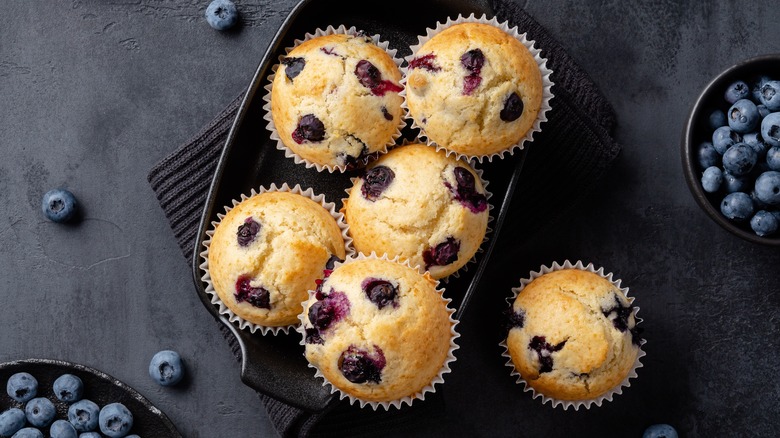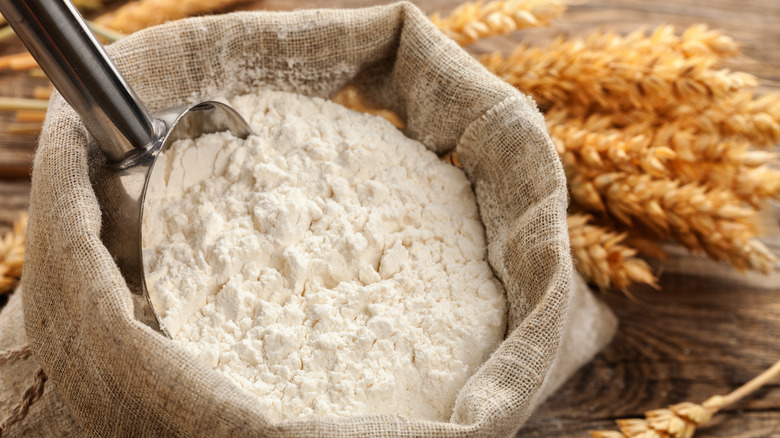The Reason Some Baked Goods Don't Require Sifting
Many home bakers cling to a few golden rules to ensure success. Often those directives are passed down through generations, or perpetuated by baking blogs and advice platforms. But it's a good idea to re-evaluate best practices from time to time, as technology and other factors are always changing the way we live, and baking is no exception.
If you're someone who has always sifted dry ingredients, you may be happy to hear that you can now skip this step for some baked goods, and simply whisk them instead. The reason for this is thanks to progress in how flour is milled in the modern day. Whereas processes in the past yielded coarse flour grinds that clumped easily, today's milling process creates a more refined product where that's less of a problem. This new information helps save time and avoids head-scratchers like whether you should sift flour before or after measuring it.
Why did we sift in the past?
Historically, there have been a number of reasons sifting was important — primarily because of that clumping conundrum. When combining dry ingredients with wet ones, full hydration is the goal. If you have clumps in your dry ingredients, you'll be less likely to get that consistent hydration which means your batter will be unevenly wet (and you might get a mouthful of flour in your muffin). Sifting was necessary to break up that clumping in less refined flours, making it easier to achieve even hydration and distribution of ingredients.
The coarser grind also resulted in heavier flours, which would compress during delivery and storage. If you were measuring by volume, this meant baked goods could be unpleasantly dense and prone to sinking. Even with today's commercial flour, it's still a good idea to transfer your dry baking ingredients into airtight containers, where you can stir them up easily and prevent that compression over time. This ensures that your flour will have the necessary aeration too, making it easier to mix, and also yielding a lighter finished product. That less refined flour often came along with some undesirable debris as well, from husks and seeds to bugs. Sifting helped sort those bits out before baking.
When should you still sift?
There are scenarios when you still want to sift your dry ingredients. If you haven't used your flour in a while, it will likely settle and become "packed." Similarly, humidity will cause dry ingredients to clump, so if this describes your kitchen, keep an eye out for those chunky bits. There are also a few ingredients that still benefit from sifting: Cake flour and cocoa powder, as well as powdered sugar are all more likely to clump. If you're not totally sure whether you should sift though, there's a simple, common sense answer: If you see clumps, go for it.
In the absence of sifting, it's still critical to at least whisk your dry ingredients all together. This ensures that important elements like leaveners are well-combined, and that you don't end up with a mouthful of cake that has an entire recipe's worth of salt in a single bite. So give your baking process an update from sifting to whisking your dry ingredients. This way, making everything from your ultimate chocolate cake to your blueberry muffins just got a little bit simpler.


